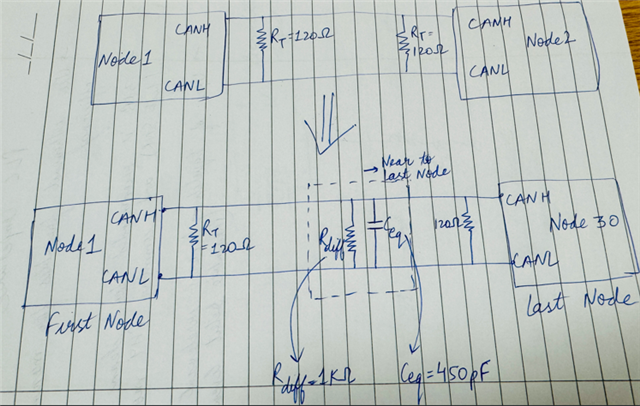Hi,
I want to test the working of the CAN Transceiver for which I need to connect 28 nodes between TX and RX node. So, instead of adding multiple nodes to increase propagation delay, rise time and fall time, can I add the capacitance on CANH and CANL of the last node.
For eg, as mentioned in TI datasheet, Max Input capacitance to ground is 30pF(CANH or CANL) 
Now, for replicating 28 nodes, Can I add 28*30 = 840pF each on CANH and CANL of the last node.
As per my understanding this would help in replicating 30 nodes.
Please let me know if my understanding is correct or not.
If not, how can I replicate the effect of 28 intermediate nodes without adding actual nodes?
Thanks.





